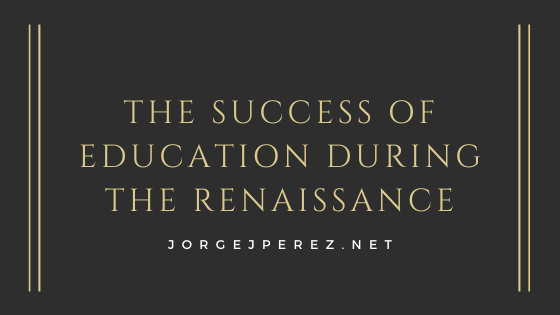All societies regulate their foundational beliefs and doctrines through their education system. One of the most successful education systems in history came from the Italian Renaissance, which lasted into the 20th-century. The Renaissance was a rebirth of the education systems of previous civilizations. Humanists during the Renaissance believed that education was the most effective way of transforming people’s beliefs and making them mindful of their responsibilities to the community. Educators during the Renaissance primarily taught the humanities, including:
- Ancient authors
- Grammar
- Moral philosophy
- Poetry
- Rhetoric
There are different theories about who created the Renaissance. Most experts theorize the movement began with the Moors in Spain.
The Renaissance and Latin Grammar
During the Renaissance, boys were taught at home by a tutor and began studying Latin Grammar at the age of five. Children learned their native language at home, but Latin was introduced as an alternative language. Latin was the language in which people of the same class communicated.
Education and Challenging Texts
When boys knew the Vulgate and Caesar’s commentaries, more complex reading materials were added to the curriculum. The Aeneid of Virgil was a mythological chronicle of the Italian people, a connection to the Trojans and their mythology, and a poetic study. When boys reached their teens, they were expected to study the most difficult Latin texts, including texts by the historian Sallust. The complex concepts in these texts and the more intricate style encouraged students to think and question the material.
The Renaissance and Authors of Questionable Morals
Latin had long been the staple for learning in the Middle Ages. However, learning Greek became important during the Renaissance to understand ancient civilizations, art, culture, mythology, and for studying Greek texts by morally ambiguous authors. These texts relied heavily on a teenage boy’s mind to deduce what was morally right and correct versus what wasn’t. In so reading these texts, the mind was shaped to think about the impact of one’s choices in terms of socially acceptable and unacceptable.
Teenaged boys studied the more morally ambiguous authors once they could distinguish what morally acceptable behavior was. Ovid’s Metamorphoses was one of the most popular books, and the stories were easy for younger readers to learn. The literary work inspired many poets and artists, containing more than 1200 lines of poetry and more than 250 myths to inspire imagination.
Science and Mathematics
Science wasn’t stressed as much as mathematics but was taught. One book that every boy read was Historia Naturalis which contained stories about geography and science. Mathematics was a practical subject that boys were required to learn. In Venice and Florence, boys in wealthier homes were being groomed to be merchants and expected to excel in mathematics. Geometry was taught to boys who anticipated a military career. Astrology was a popular science during the Renaissance, and astronomy was a practical science for sailors who navigated by the night sky.
Although some branches of science were taught, they were not as useful as mathematics, or so it was thought. Unless a boy was going into the healing arts or winemaking or sailing, science was generally thought of as a subject of minor import. During the late years of the Renaissance, when great minds began to assert that the Earth was round and not flat, science became very important for proving this new line of thought. It would take a couple hundred years for it to become a widely accepted fact that the Earth was round, but when it was taught early on to young boys the idea led to greater world exploration.
As you have seen, typically only male children of wealthy families had formal education up until the Renaissance. Slowly, education for girls and women came into play. However, education was still thought of as predominantly a male right since men were expected to conduct business and rule their houses with the education they had received. Education, regardless of who received it, was only as successful as the subjects taught and learned.

